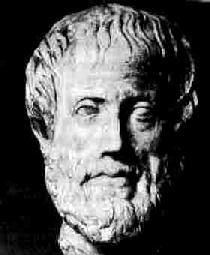This recent report is analyzing chondroitin and not glucosamine...
If you take the time to review the literature on the matter, it seems there are indeed effective forms of glucosamine (and
) -- at least they appear that way in RCTs (randomized controlled trials).
The form of crystalline glucosamine sulphate seems to be the most safe and effective that I know of; then again, it appears that the glucosamine sulphate form may also be equally effective.
However, any time researchers mix in results from studies using what appear to be effective forms of glucosamine (with or without chondroitin) in what appear to be the somewhat (or more questionable)
; namely the glucosamine hydrochloride and/or N-acetyl glucosamine, the results will be inconclusive. Apples are not oranges.

EDITORIAL
Chondroitin for Pain in Osteoarthritis
David T. Felson, MD, MPH
17 April 2007 | Volume 146 Issue 8 | Pages 611-612
David T. Felson, MD, MPH
17 April 2007 | Volume 146 Issue 8 | Pages 611-612
--------------------------------------------------------------------------------
Frequent knee pain affects about 25% of adults (1), at least half of whom have osteoarthritis (2). Persons with knee and other joint pain often take over-the-counter nutritional supplements available in grocery stores, in drug stores, or online for treatment of their joint pain. The most popular supplement is a pill containing a combination of glucosamine and chondroitin. The demand for the chondroitin component of this pill alone constitutes a $1 billion-per-year market in the United States.
The primary pathology of osteoarthritis is loss of hyaline articular cartilage. Chondroitin sulfate, a glycosaminoglycan, is a constituent of a large macromolecule in cartilage called aggrecan. Glycosaminoglycans like chondroitin have a high negative charge. During cartilage compression, the negatively charged glycosaminoglycan molecules are forced into proximity, increasing the electrostatic repulsive force among them. As compression ends, the electrostatic force predominates and they move away from each other, allowing cartilage to reassume its usual thickness. Thus, aggrecan and its constituents—including chondroitin—provide compressive stiffness to cartilage. The concept of ingesting a molecule found in cartilage so that it might be incorporated into cartilage is appealing, but the logic is misleading: Glycosaminoglycans are not synthesized from intact chondroitin molecules; therefore, it is unlikely that ingested chondroitin would be incorporated intact into cartilage.
There are 2 other practical concerns about the potential efficacy of chondroitin sulfate. First, because chondroitin is a large macromolecule, only about 12% to 13% of ingested chondroitin is absorbed intact into the bloodstream (3). Second, while chondroitin therapy supposedly targets cartilage, osteoarthritis affects the whole joint, not just cartilage. Pathologies include bone sclerosis, remodeling and deformity, ligamentous stretching and loss of integrity, muscle atrophy, joint capsular stretching, and even synovial inflammation. A molecule targeted only at constituents of cartilage is unlikely to affect all manifestations of osteoarthritis. Also, any treatment targeting cartilage alone would be unlikely to alleviate pain, the predominant symptom of osteoarthritis, because cartilage is aneural.
Animal studies suggest that chondroitin functions as an anti-inflammatory agent rather than being directly integrated into cartilage (3). If chondroitin does indeed have a modest anti-inflammatory effect, then it could alleviate pain. The link between pain severity and extent of synovitis revealed on a magnetic resonance imaging joint scan (4) and the superiority of nonsteroidal drugs over acetaminophen for alleviating osteoarthritis pain (5) both indicate that inflammation plays a role in causing osteoarthritic pain.
A series of randomized trials has compared chondroitin with placebo for treating pain in (usually knee) osteoarthritis. Until the past 2 or 3 years, such trials suggested that chondroitin was more efficacious than placebo, although actual estimates of efficacy varied widely from study to study. At least 1 trial reported that chondroitin was more effective than total knee replacement (6), a finding that lacks credibility. In a meta-analysis of these trials, McAlindon and colleagues (7) reported that chondroitin was more efficacious than placebo but also noted evidence for publication bias because small, null studies were unpublished. They also raised concerns about the quality of the chondroitin trials, noting that only 1 had an intention-to-treat analysis and most inadequately concealed the sequence of random allocation of patients from the investigators. To resolve uncertainty about the efficacy of both chondroitin and glucosamine, the National Institutes of Health carried out the Glucosamine/chondroitin Arthritis Intervention Trial, a large multicenter study evaluating glucosamine, chondroitin, glucosamine and chondroitin combined, celecoxib, and placebo for treating knee osteoarthritis. The results, published in 2006, showed that glucosamine, chondroitin, and the combination did not have statistically significantly greater efficacy than that of placebo, although celecoxib showed statistically significant efficacy (8).
In performing their meta-analysis published in this issue, Reichenbach and colleagues (9) adopted an interesting strategy for untangling the conflicting trial evidence. They quantified the substantial heterogeneity of the efficacy results in these trials and then identified a subset of large high-quality trials that showed similar estimates of efficacy, thereby hoping to provide convincing evidence on the efficacy of chondroitin. They selected 3 recent large-scale trials, all of which did intention-to-treat analyses and adequately concealed the sequence of random allocation. They noted that chondroitin was ineffective in all 3 trials. In their view, this evidence should convince skeptics and advocates alike. This editorial asks whether this evidence is, in fact, compelling.
Was it reasonable to select 3 recent large-scale trials and not summarize all of the evidence? In meta-analyses, marked discordance or heterogeneity among trial results is common (10) and is often ignored by meta-analysts in generating summarized results (11). Because the recent large studies showed that chondroitin was ineffective and the earlier studies suggested that it was very effective, Reichenbach and colleagues decided that combining such disparate studies and calculating a single measure of efficacy was inappropriate. I believe that, by identifying a subgroup of trials with high-quality, consistent evidence, they have provided a compelling estimate of the likely efficacy of chondroitin. The earlier trials constitute a group with heterogeneous results, mixed quality, and smaller sample sizes, all of which make their results less credible than those of the recent large, well-done studies. Furthermore, because publication bias was evident in the earlier trials (7), an aggregate measure of their results would also probably be biased.
Using meta-regression, Reichenbach and colleagues also explored why heterogeneity was so widespread among the trials. Sometimes such explorations yield insights about particular treatment regimens or types of patients in whom treatments are efficacious—for example, trials that found chondroitin effective could have been using a different preparation from those in trials that reported null findings. Unfortunately, Reichenbach and colleagues did not find an explanation for trial heterogeneity, but trial reports often do not contain enough information to allow the meta-analyst to identify important differences among trials.
Other meta-analyses of treatments have noted reports of impressive efficacy in initial trials that were followed by reports from later, larger, better-done trials that contradicted the earlier findings (12). Possible explanations for this recurring pattern include the selection of patients likely to respond in earlier trials and the tendency for trials of exciting new treatments that report positive results to be published even when other concurrent trials have negative results. Later trials also tend to be larger and more representative of all trial results (12).
Chondroitin, in the United States at least, is almost always sold in a combination pill with glucosamine. The meta-analysis by Reichenbach and colleagues included studies of chondroitin alone, not combined with glucosamine; therefore, the results of their meta-analysis might not apply to the combined product. In addition to the null effects of chondroitin, the Glucosamine/chondroitin Arthritis Intervention Trial (7) also reported that the hydrochloride form of glucosamine (the most popular formulation in the United States) and the combination of glucosamine and chondroitin were no more efficacious than placebo. Thus, for most patients, the combination of glucosamine and chondroitin is not likely to alleviate joint pain.
What should clinicians take away from the study by Reichenbach and colleagues? As the authors suggest, the best current evidence is that chondroitin sulfate does not reduce joint pain in osteoarthritis. However, some patients are convinced that it helps, which could be because of a placebo response or even a therapeutic response resulting from enhanced absorption or limited metabolism of chondroitin. Because no frequent or severe adverse effects have been reported, chondroitin sulfate should not be considered dangerous. If patients say that they benefit from chondroitin, I see no harm in encouraging them to continue taking it as long as they perceive a benefit.
Author and Article Information
From Boston University and Boston Medical Center, Boston, Massachusetts.
Grant Support: Dr. Felson is supported by National Institutes of Health grant AR 47785.
Potential Financial Conflicts of Interest: Grants received: Merck & Co.
Requests for Single Reprints: David T. Felson, MD, MPH, Clinical Epidemiology, A203, Boston University School of Medicine, 80 East Concord Street, Boston, MA 02118; e-mail, jendez@bu.edu.
References
1. Peat G, McCarney R, Croft P. Knee pain and osteoarthritis in older adults: a review of community burden and current use of primary health care. Ann Rheum Dis. 2001;60:91-7. [PMID: 11156538].[Abstract/Free Full Text]
2. Hannan MT, Felson DT, Pincus T. Analysis of the discordance between radiographic changes and knee pain in osteoarthritis of the knee. J Rheumatol. 2000;27:1513-7. [PMID: 10852280].[Medline]
3. Ronca F, Palmieri L, Panicucci P, Ronca G. Anti-inflammatory activity of chondroitin sulfate. Osteoarthritis Cartilage. 1998(6 Suppl A):14-21. [PMID: 9743814].[Medline]
4. Hill CL, Gale DG, Chaisson CE, Skinner K, Kazis L, Gale ME, et al. Knee effusions, popliteal cysts, and synovial thickening: association with knee pain in osteoarthritis. J Rheumatol. 2001;28:1330-7. [PMID: 11409127].[Medline]
5. Felson DT. The verdict favors nonsteroidal antiinflammatory drugs for treatment of osteoarthritis and a plea for more evidence on other treatments [Editorial]. Arthritis Rheum. 2001;44:1477-80. [PMID: 11465696].[Medline]
6. Rovetta G. Galactosaminoglycuronoglycan sulfate (matrix) in therapy of tibiofibular osteoarthritis of the knee. Drugs Exp Clin Res. 1991;17:53-7. [PMID: 1914837].[Medline]
7. McAlindon TE, LaValley MP, Gulin JP, Felson DT. Glucosamine and chondroitin for treatment of osteoarthritis: a systematic quality assessment and meta-analysis. JAMA. 2000;283:1469-75. [PMID: 10732937].[Abstract/Free Full Text]
8. Clegg DO, Reda DJ, Harris CL, Klein MA, O'Dell JR, Hooper MM, et al. Glucosamine, chondroitin sulfate, and the two in combination for painful knee osteoarthritis. N Engl J Med. 2006;354:795-808. [PMID: 16495392].[Abstract/Free Full Text]
9. Reichenbach S, Sterchi R, Scherer M, Trelle S, Bürgi E, Bürgi U, et al. Meta-analysis: chondroitin for osteoarthritis of the knee or hip. Ann Intern Med. 2007;146:580-90.[Abstract/Free Full Text]
10. Engels EA, Schmid CH, Terrin N, Olkin I, Lau J. Heterogeneity and statistical significance in meta-analysis: an empirical study of 125 meta-analyses. Stat Med. 2000;19:1707-28. [PMID: 10861773].[Medline]
11. Petitti DB. Approaches to heterogeneity in meta-analysis. Stat Med. 2001;20:3625-33. [PMID: 11746342].[Medline]
12. Lau J, Ioannidis JP, Schmid CH. Summing up evidence: one answer is not always enough. Lancet. 1998;351:123-7. [PMID: 9439507].[Medline]
Related articles in Annals:
Reviews
Meta-analysis: Chondroitin for Osteoarthritis of the Knee or Hip
Stephan Reichenbach, Rebekka Sterchi, Martin Scherer, Sven Trelle, Elizabeth Bürgi, Ulrich Bürgi, Paul A. Dieppe, and Peter Jüni
Annals 2007 146: 580-590. (in ) [
So, to treat osteoarthritis, it appears the effective forms of glucosamine is/are the better way to go and not chondroitin sulphate/chondroitin.
























































